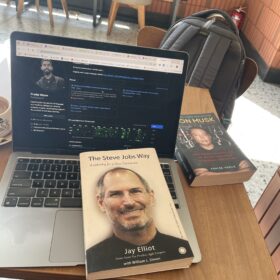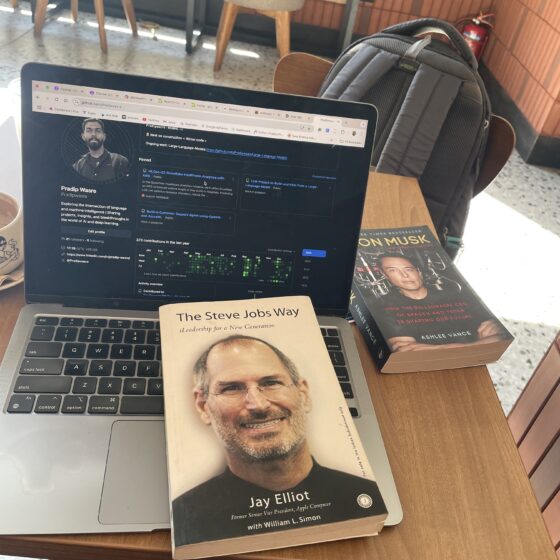W4: Day 1 – LLM Selection, Evaluation, and Benchmarks
Week 4 is a milestone in your journey to mastering Large Language Models (LLMs). This week, we dive deep into evaluating, comparing, and understanding LLMs. With a focus on benchmarks, scaling laws, and the latest tools, you’ll learn how to select the right model for your needs, interpret performance metrics, and optimize model parameters effectively.
Day 1.1: Choosing the Right LLM: Open vs. Closed-Source Models
Selecting an LLM is more than just picking the one with the highest accuracy. It involves understanding the underlying characteristics, costs, and performance metrics. Here’s how we approached the comparison:
The Basics (1): Core Features to Compare
- Open Source vs. Closed Source:
- Open-source models like LLaMA and GPT-J are free and customizable, ideal for research and experimentation.
- Closed-source models like GPT-4 or Anthropic’s Claude offer proprietary tools with polished APIs but come with usage restrictions.
- Release Date & Knowledge Cutoff:
- Models have a fixed knowledge cutoff, beyond which they lack updates. Knowing this helps assess relevance.
- Parameters & Training Tokens:
- Parameters: The number of weights in the model. Larger models often perform better but require more resources.
- Training Tokens: The size of the dataset used for training. More tokens improve language understanding but increase computational costs.
- Context Length:
- Defines how much text the model can process at once. Models with longer context windows (e.g., 32k tokens in GPT-4 Turbo) are ideal for tasks like document summarization.
The Basics (2): Cost and Performance Considerations
- Interface Costs:
- OpenAI models charge per API usage, while running open-source models in-house involves compute costs.
- Training and Build Costs:
- Training large models can cost millions of dollars. Pre-trained models reduce this expense.
- Time to Market:
- Closed-source APIs are quicker to integrate, while building from open-source models takes time.
- Rate Limits & Latency:
- Assess rate limits for high-traffic applications. Faster response times enhance user experience.
- License Restrictions:
- Open-source models may have fewer restrictions, while closed models might limit commercial use.
By comparing these features, you can align the choice of an LLM with your budget, timeline, and technical requirements.
Day 1.2: Chinchilla Scaling Law: Optimizing Parameters and Training Data
Efficient training is key to achieving high-performing models. The Chinchilla Scaling Law provides a rule of thumb for balancing parameters and training data.
Core Principle:
The number of parameters in a model should be proportional to the number of training tokens.
- Underfitting: Using fewer training tokens than the model’s capacity leads to wasted potential.
- Overfitting: Using excessive training tokens leads to diminishing returns.
Applications of the Scaling Law:
- If you upgrade to a model with double the parameters, you should double the training data size.
- For companies, this means optimizing compute resources without overcommitting to costly datasets.
Day 1.3: Limitations of Benchmarks
Benchmarks are the primary tools to evaluate LLMs, but they have limitations. Here’s what we learned:
Common Benchmarks:
- ARC: Evaluates scientific reasoning with multiple-choice questions.
- DROP: Tests language comprehension by requiring sorting and counting.
- HellaSwag: Measures common-sense reasoning with challenging ending predictions.
- TruthfulQA: Tests models on resolving ambiguity in factual contexts.
- GSM8K: Evaluates math and word problems typically taught in school.
Specific Benchmarks for Developers:
- HumanEval: Focuses on Python coding challenges.
- MultiPL-E: Translates HumanEval into multiple programming languages.
- ELO: Uses a head-to-head comparison approach similar to chess rankings.
Limitations:
- Narrow Scope: Many benchmarks focus on specific skills like reasoning or math but fail to capture general capabilities.
- Overfitting: LLMs can “cheat” by memorizing benchmark-specific patterns.
- Training Data Leakage: If benchmarks appear in training data, evaluation becomes less reliable.
- Nuanced Reasoning: Benchmarks often fail to measure subtle reasoning skills required in real-world scenarios.
- Frontier Models’ Awareness: Emerging concerns that advanced LLMs may “know” they’re being evaluated, potentially skewing results.
Day 1.4: Evaluating LLMs with Next-Level Benchmarks
As LLMs evolve, new benchmarks have emerged to test their capabilities in more sophisticated ways. Here are six next-level benchmarks:
- GPQA (Graduate Tests):
- 448 expert-level questions. Humans score 34% on average, even with web access.
- BBHard (Feature Capabilities):
- Contains tasks previously believed to be beyond LLMs, such as advanced reasoning.
- Math LV5:
- High school-level math problems designed to challenge LLMs.
- IFEVAL (Instruction Following):
- Tests compliance with complex instructions, like “Write more than 400 words.”
- MuSR (Multistep Soft Reasoning):
- Measures logical deduction in scenarios like analyzing a murder mystery and identifying means, motive, and opportunity.
- MMLU-PRO (Harder MMLU):
- An advanced version of the popular MMLU benchmark with more answer choices and challenging questions.
January 2025: The Leading LLM
As of January 2025, the leading LLM globally is GPT-4 Turbo.
Why GPT-4 Turbo Leads:
- Parameters and Weights:
- Approximately 1.8 trillion parameters optimized with cutting-edge scaling laws.
- Training Tokens:
- Trained on a dataset exceeding 10 trillion tokens, covering diverse languages and domains.
- Context Length:
- Supports up to 32,000 tokens, making it ideal for long documents and conversations.
- Performance:
- Consistently tops benchmarks like ARC, TruthfulQA, and BBHard.
- Cost Efficiency:
- Offers lower costs compared to earlier GPT-4 models, making it accessible for both businesses and developers.
Day 1.5: HuggingFace OpenLLM Leaderboard
HuggingFace provides a comprehensive leaderboard to compare open-source models. This tool is invaluable for evaluating models like LLaMA, BLOOM, and Falcon.
How to Use the Leaderboard:
- Identify Strengths: Models excel in different benchmarks, helping you match them to specific tasks.
- Compare Hardest Benchmarks: Tests like BBHard and MuSR push models to their limits.
Why It’s Important:
HuggingFace democratizes access to evaluation tools, enabling developers to experiment with models without hefty costs.
Day 1.6: Mastering LLM Leaderboards
By the end of this week, you’ll be equipped to:
- Navigate LLM leaderboards and evaluate models effectively.
- Understand how benchmarks translate to real-world applications.
- Choose the right LLM for commercial projects, balancing performance, cost, and feasibility.
Stay tuned for more insights as we unlock the full potential of LLMs!

